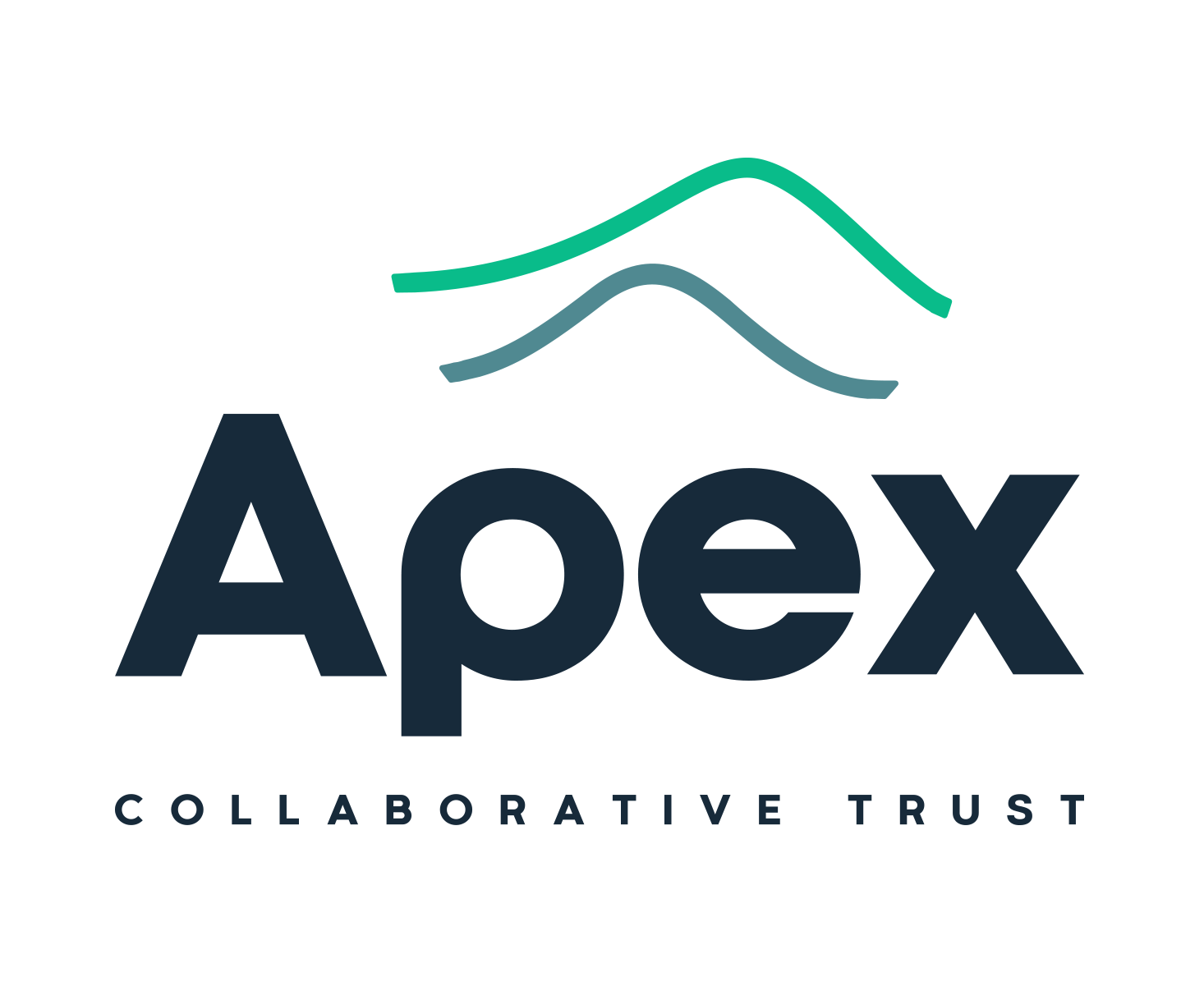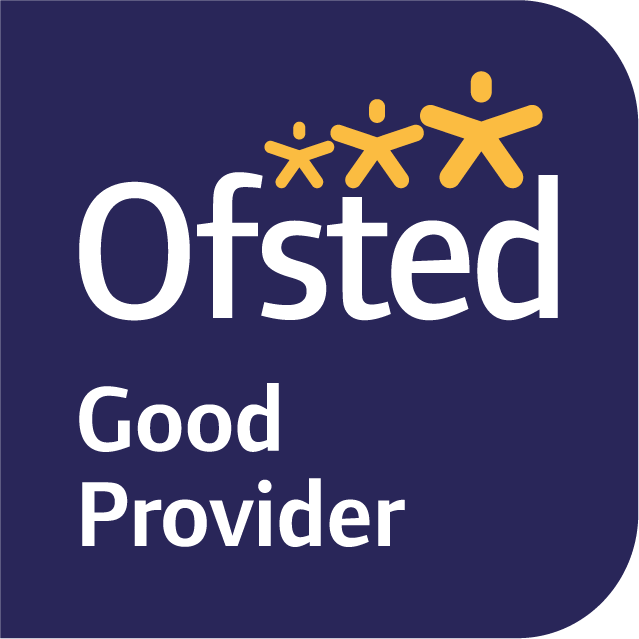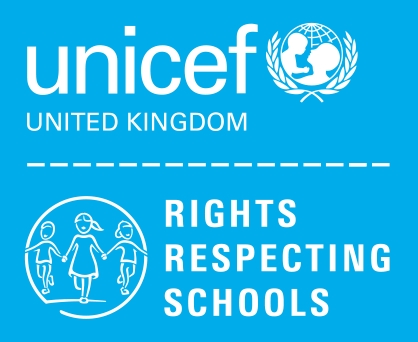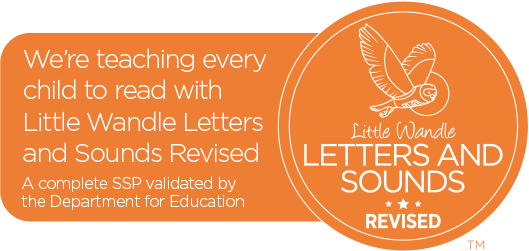English
At Blacko Primary School, we put English at the centre of every child’s learning. We recognise the significance of language, communication, reading and writing in all aspects of life, from developing independent learning skills to successfully entering the world of work. We place high-quality texts at the heart of our curriculum and encourage children to develop their love of reading through our Reading for Pleasure initiatives. Experiential learning opportunities and a vocabulary-rich learning environment feed directly into children’s writing outcomes.
The overarching aims of our English curriculum are to:
- Develop strong oracy skills that allow children to express themselves, communicating confidently across a range of contexts.
- Enable children to read fluently, widely and often, understanding a wide range of texts appropriate for their age.
- Enable children to draft, edit and present writing that is both technically proficient and creative, tailored to the demands of purpose and audience.
- Enable children to have a solid understanding of grammar and be able to spell new words by effectively applying the spelling patterns and rules they learn throughout their time in primary school.
- Encourage confidence and enjoyment in speaking, listening, reading and writing.
Underpinning our English curriculum are some core principles:
- Consciously builds on children’s existing language and literacy experiences.
- Recognises the importance of all those involved in the learning experience – parents and carers, wider family members, teachers and children.
- Values diversity and is culturally inclusive.
- Has high expectations of all children.
- Values and promotes critical enquiry.
- Offers challenge but provides models, demonstrations, examples and scaffolds to help children tackle them successfully.
All aspects of our English curriculum are interrelated, and progress in one area is supported by development in each of the others. At Blacko Primary, we acknowledge the strong reciprocal relationship between speaking, listening, reading and writing.
Writing
“After nourishment, shelter and companionship, stories are the thing we need most in the world.”
-Phillip Pullman
At Blacko Primary School we believe that all pupils can achieve within Writing. We do not put ceilings on what pupils can achieve, and we do not hold pre-conceptions about any pupils’ ability to make progress. We believe through writing, pupils will have a chance to develop culturally, emotionally, intellectually, socially and spiritually. We feel that writing enables pupils both to acquire knowledge and to build on what they already know.
In the Early Years, children start their writing journey through their play, mark making for a range of different purposes, for example, writing shopping lists and making cards for loved ones, as well as learning to write their name. They begin to develop their fine motor skills so that they can use mark making tools appropriately. In Reception, they learn the individual letters and sounds and begin to develop their letter formation. They use these emerging skills to write phonetically plausible words, phrases and simple sentences in a range of contexts. Alongside this, we focus strongly on language development and oracy skills – if they can’t say it, they can’t write it! We give children memorable experiences and rich, high-quality texts and ensure there is an audience and purpose for the writing process.
Throughout Key Stage 1, the link between reading and writing continues to be reinforced. Children’s oracy skills are developed further through a wide variety of opportunities to discuss, verbalise and refine their ideas, for example through role play, paired talk, drama and hot seating. This prepares them for the writing process. Alongside this, the children learn about the structure and organisation of a variety of genres. Shared and modelled writing provides an opportunity for teachers to demonstrate the writing process. Children will then use their developing phonic knowledge within their writing, before editing and redrafting their work. Motivation is enhanced by encouraging children to write for a range of purposes and audiences, including opportunities to publish their writing. Children are taught to develop the foundations of a fast, accurate and efficient handwriting style.
As they move into Key Stage 2, children are taught age-related statutory spellings, spelling patterns, and spelling rules from the National Curriculum. The teaching sequence for each spelling focus is: revise, teach, practice, apply. Pupils are encouraged to practice sentence combining and other sentence construction techniques. A fluent writing style supports composition, therefore handwriting is explicitly taught. There is a whole-school structured approach to teaching vocabulary in the classroom. This is focused on whole class learning but is accessible to all children.
Children follow a structured approach to the writing process which begins with the deconstruction of a model text. Key grammatical structures are identified, and relevant skills are taught through shared and modelled writing. Children then apply their learning through the process of planning, drafting, sharing, evaluating, revising, editing and publishing. Children are given opportunities to write effectively for a range of purposes and audiences select language, appropriate grammatical structures and cohesive devices that show a good awareness of the reader. Children working at greater depth are encouraged to exercise conscious control over levels of formality, including the manipulation of grammar and vocabulary, in order to demonstrate the appropriate register. High-quality literary texts are available to all learners. The scope and depth of the literature inspires high standards for all through a mastery approach to learning and love of language in all its forms.
Reading
The more that you read, the more things you will know, the more that you'll learn and the more places you'll go
- Dr Seuss
At Blacko we aim to inspire children to be passionate readers and instil a love for reading. We aim to ensure every child is a confident decoder with a maturing understanding and passion for books by the end of KS1. We build upon this fluency by focussing upon further improving comprehension and language in KS2 through a range of collaborative and independent learning styles. We intend to develop confident readers that continue to develop a love of books which educate, challenge and enthral them throughout their time at Laneshaw Bridge and beyond.
Whole Class Reading
As children move into Year 2 and Key Stage 2, we progressively teach reading strategies and behaviours that can be applied to a range of text types and genres across the whole curriculum and in Whole Class Reading sessions. We provide a rich reading curriculum and environments that include reading high-quality texts to children, with children, and by children; for example, individual reading, small groups and whole class guided reading, shared reading, reading aloud and reading clubs.
With consideration to Metacognition, the process of model, share and do is embedded into the reading comprehension lessons, to ensure long-term retention of skills and information to aid pupils in later life and empower them for life beyond Blacko Primary School. Whole Class Reading comprehension is taught through specific strategies that include prediction, clarification, retrieval, summarising, inference and the activation of prior knowledge. Texts are carefully selected to support the teaching of these strategies.
‘Free reader’ children from Year 2 – 6 have a selection of books to choose from in class that are ability- and age-appropriate. Staff assess fluency, misconceptions and instructional reading levels through 'benchmarking' and 1:1 reading sessions. Children complete termly NFER reading test materials to further inform ongoing teacher assessments.
Through our River of Reading / Reading Canon progression document which outlines key texts for each year group, linked by themes, children can make connections to prior learning and build their language knowledge. They can compare texts within and across themes, as well as considering the broader messages. Each theme has suggested texts for Literary Heritage, Picture books, Fiction, Non-fiction, and Poetry to ensure a balance of genres.
Class 1 Reading Bookshelf
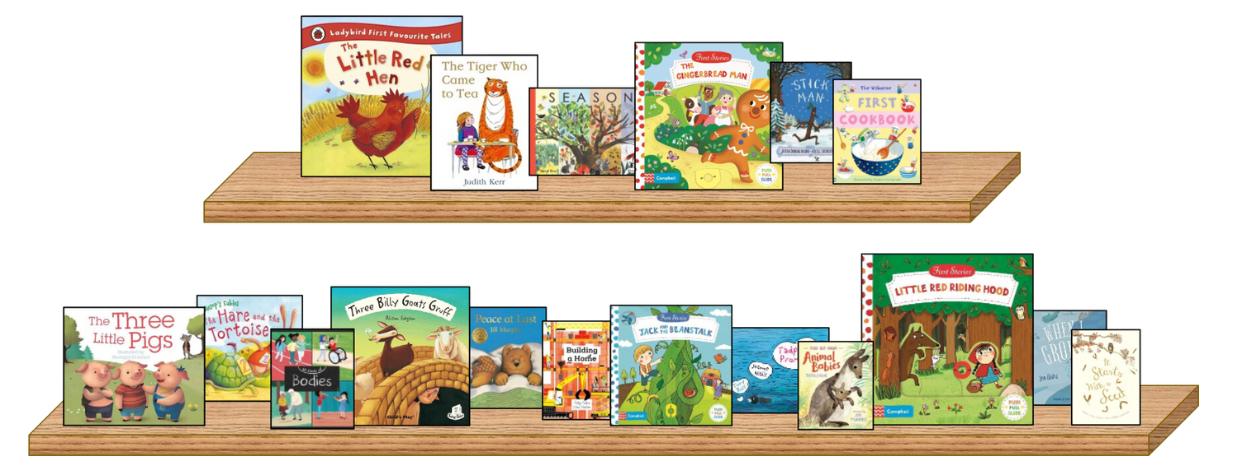
Class 2 Reading Bookshelf - Year A

Class 2 Reading Bookshelf - Year B

Class 3 Reading Bookshelf - Year A

Class 3 Reading Bookshelf - Year B

Class 4 Reading Bookshelf - Year A

Class 4 Reading Bookshelf - Year B

Pleasure for Reading
Underpinning all of this is our Reading for Pleasure initiative. We want our children to become successful and enthusiastic readers who have a well-developed reading identity. Children will learn to read and then use their reading skills to learn about the world they live in, establish an appreciation of high-quality literature, and gain knowledge from across the wider curriculum subject areas.
All texts are chosen to enthuse our children and build confidence with reading. We aim to expose children to a plethora of text types and intend to ensure children enjoy reading. We also implement a range of strategies and events alongside class teaching. These include:
- Book Club run by our Reading Ambassador children
- Daily class story time
- Weekly library time for all children
- Library reviews for texts and displays for reading
- Author Visits
- Book day events
- Parent come and read sessions with children
- Festivals/ Enrichment days
- Book of the Week - shared with parents via the newsletter
Lovemybooks is for parents, carers, teachers, schools, and early years staff, created by literacy experts.
Vocabulary
Words, in my humble opinion are our inexhaustible source of magic
- J.K. Rowling
“In order for students to become fluent in complex subject-specific terminology and more general vocabulary, the process of learning new words needs to be considered deliberately and explicitly as part of teacher instruction.” Tom Sherrington & Oliver Caviglioli.
At Blacko Primary, we value the importance of vocabulary by making it a priority in every subject across the curriculum. As well as providing opportunities to explore vocabulary through talk and reading we plan for the explicit teaching of vocabulary.
Subject leaders have selected word lists for their subject; they build in complexity each year so that children can build upon their skills and knowledge. Vocabulary is revisited and refreshed to ensure that it becomes embedded.
Approach for vocabulary development
-
Specify and define the words – introduce a new word and share its meaning using child-friendly share an example of the word in context.
-
Say the words:
-
Chorally – all children repeat the words in call and response
-
In pairs – structured paired discussions where children need to use the words they are
-
Rapid fire – children can use the words through individual
-
-
Read words in context – support understanding and recall of the vocabulary by providing children with the vocabulary in different contexts.
-
Practice using the words verbally and in writing – children are expected to use the new terminology where relevant rather than reverting back to more familiar basic terms.
-
Engage in word-based retrieval practice – children participate in regular retrieval practice using the target Children are required to recall the words from memory, know what they mean, and identify their correct use in context.
Strategies for practise and retrieval
-
Pictures and actions may be used when introducing and teaching new,
-
A co-build Frayer model used uniformly throughout,
-
Breaking words down – looking at morphology, phonology,
-
Reading key vocabulary in,
-
Explicitly writing in sentences.
SEND
Pupils with SEND will be supported to access our English curriculum through adaptations depending on their need. Adaptations for learning follow the EEF's 5-a-Day Principles and these adaptations, through Ordinary Alternative Provision(OAP), will be planned by teachers to support all children in being able to achieve, regardless of their individual needs.
Our SEND page provides parents with further information about what this could look like for your child and where you can seek further information or support.
